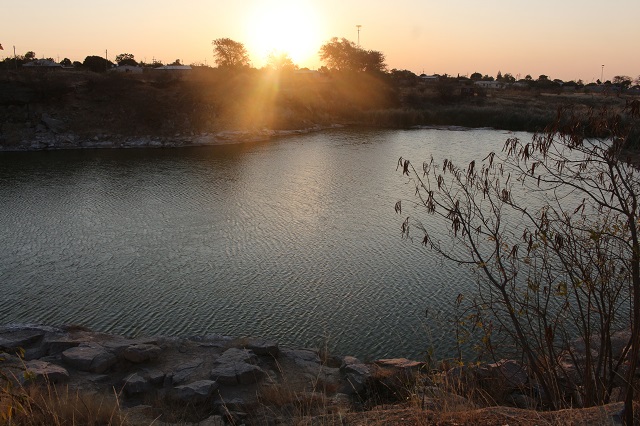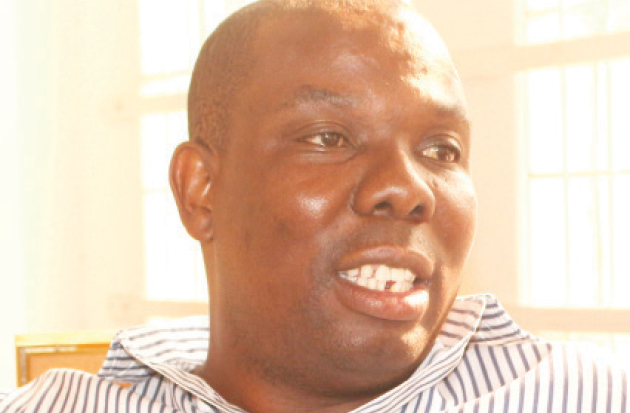Enkwalini: When suicide cases become epidemic

Bruce Ndlovu
The calm, clear waters of Enkwalini do not reveal their tragic secrets to the casual passerby with little knowledge of either it or the Entumbane community that surrounds it.
To the initiated, Enkwalini is just another harmless body of water, hardly big enough to warrant more than a second glance as one passes its waters which may occasionally sway and dance at a passing wind’s encouragement.
To the local community however, it is a prolific killer.
Christened the “Pool of Death”, it is a place where many have met their end.
Most of these deaths, estimated by authorities to number more than a dozen in the last few years, have been premeditated acts of suicide.
Recently, this serial claimer of lives spit out its latest victim. A young boy, while hoping to reel in a few fish, discovered instead the body of 43-year-old Ngoni Savanhu.
The events leading up to the death and discovery of Savanhu were familiar enough to residents of Entumbane suburb. It is a movie that residents have seen play out before, albeit with a different cast every time.
First, Savanhu went missing and then his body was discovered, as usually happens at the pool, by the fisherman who alerted the authorities. In front of residents who jostled, strained necks and rubbed shoulders in an attempt to catch a glimpse of Enkwalini’s latest victim, Savanhu’s body was then recovered by authorities.
In the aftermath residents were indignant, demanding as they did last March when Dalisa Ntele floated out of the pool’s belly, that authorities do something about this silent and ravenous monster that lives next to them.
“We appeal to members of the public not to resort to extreme measures when they’re having difficulties. It’s important to engage other people who can assist in coming up with solutions to problems,” said Bulawayo police Inspector Precious Simango.
The events before and after Savanhu’s death were similar, down to even the cautionary refrain from the police, to happenings that surrounded the death of Ntele last year.
Lifeless bodies wash out of Enkwalini’s body and spill onto newspaper pages fairly regularly.
“POOL OF DEATH CLAIMS ANOTHER,” newspaper billboards scream.
It is a circle that repeats itself over and over again.
“Suicides are now a daily thing here and we’re not shaken at all. A young boy who was over that corner spotted the body and we called the police,” said a fisherman who spoke to the The Chronicle after Savanhu’s body was retrieved.
While the public rages at the pool that has claimed so many, the residents of Entumbane suburb may be undergoing the phenomenon of cluster or copycat suicide without knowing it.
The Medical Dictionary defines cluster suicide as “a chain of completed suicides, usually among adolescents, in a discrete period of time and area, which have a ‘contagious’ element.”
Although the phenomenon is more common amongst youths, the suicide bug can bite even older members of a community.
In 1980, two young girls living in northern Sri Lanka committed suicide by eating the seeds of the yellow oleander, a common ornamental shrub that grows in most parts of the tropics and is cultivated across Sri Lanka in gardens and hedges.
In 1981, there were 23 cases of oleander poisoning, 46 in the year after that and hundreds more cases in the following years.
Although on a smaller scale, the calm waters of Enkwalini have, in the past few years especially, become a keen seductress whose most common victim is the troubled individual seeking a “way out”.
As its infamy and notoriety grows so might the frequency of suicide attempts.
“Yes, it’s possible for such a place to be a draw card for people who want to commit suicide,” says Dr Dixon Chibanda, a psychiatrist and mental health expert.
“In Harare, there’s a similar place in Epworth where a number of people have committed suicide.
Most people who commit suicide suffer from depression which is treatable. So the main thing here is to increase community awareness and educate the public about mental health in general and where they can get help when they need it.”
The profile of some of Enkwalini’s most recent victims, revealed by their grieving families, suggests that those who have ended their lives in the depths of the pool had psychological problems that were untreated and unattended to.
“He has been having serious problems of late after his wife left him with four children to take care of,” said Joseph Savanhu Jnr of his late brother who he also characterised as a quiet man who rarely voiced his thoughts.
Ntele for his part had told family members and friends that they were seeing him for the last time before his suicide.
The first two oleander suicides in Sri Lanka had a ripple effect, with each suicide serving as a link that strengthened and spread the plant’s infamy until 26 years later the BBC named the tiny South Asian Island as the “suicide capital” of the world.
In 2017, despite that country’s government’s awareness campaigns and even an attempt to destroy the oleander plant, the problem still persists.
Had concerted campaigns been waged in at the suicide epidemic’s infancy in the 80s, they might have prevented the self-inflicted carnage that country has suffered through in the subsequent 37 years. If not nipped in the bud, suicide can become epidemic.
Efforts to prevent any more deaths at Enkwalini might be made tougher by the fact that Zimbabwe has struggled to get a firm grip on mental health.
At present, the country only has 12 psychiatrists to serve its entire population.
This is despite the fact that in 2015, government data indicated that 1,3 million people suffer from one mental illness or other. With that figure increasing every year, it creates fertile ground for a ballooning suicide rate.
It is thus no wonder that in 2012 the World Health Organisation listed Zimbabwe as number 19 in the world and fifth in Africa in terms of suicides committed per 1 000 people.
Back in the dust of Entumbane suburb, far away from the corridors of psychological and psychiatric research and analysis, local interaction with Enkwalini takes mythical and superstitious undertones.
Sindiso Nkomo (26) grew up in the shadow of Enkwalini’s menace, where he attended Entabeni Primary School whose pupils are regularly warned from playing close to the watery menace which refuses to be sated despite claiming many lives.
Although he has since grown up, the vivid tales of why the pool is so deadly have stayed with him.
“We were told that there’re mermaids that lure people to the pool. At one time we were also told that there’s a hippo that lives in the water. In hindsight I think that story was just meant to scare us as kids because our parents didn’t want us to go anywhere near there,” said Nkomo.
The deaths of Ntele and Savanhu have done little to quell the suspicions of those that believe lives are being taken by mythical mermaids who charm their victims in the unlikely urban setting of Entumbane.
The former’s body had a rope tied to its neck, a scar on the forehead and several other wounds while the latter was seen by local fishermen sniffing snuff before plunging to his death. Such tales provide ample fodder for conspiracy theorists and the superstitious.
With this in mind, cleansing or prayer ceremonies have been touted as plausible methods to exorcise the pool’s demonic appetite for human life.
“The problem will never get solved that way because people still die even after these ceremonies,” said Nkomo.
With fear and loathing for the pool ratcheting up, other residents have also suggested that the pool be closed or fenced off. The former has found no takers to while the latter is negated by thieves who harvest the fencing wire in the dead of the night.
“I understand that the place is very deep and there is a tunnel from it. No one knows where it ends, so in essence filling it up would be a daunting task,” said Entumbane Councillor Gladys Masuku.
With no possible short term solution, perhaps community education and outreach on likely suicide pointers and counselling might be the way to go.
Dr Chibanda pioneered the Friendship Benches programme, which saw wooden seats installed on the grounds of several health clinics in Harare. Visitors were offered six one-on-one counselling sessions with lay health workers, known as “grandmother” health providers.
A subsequent study involving more than 550 patients showed that, after six months, 14 percent of the patients in the friendship bench group reported symptoms of depression, compared to 50 percent in a control group. They were also five times less likely to have suicidal thoughts.
Dr Chibanda’s remedy, however, is not feasible for residents of Entumbane at present.
“We’re not yet operating in Bulawayo but we’re planning to scale up to Bulawayo as soon as we’re ready to do so hopefully in the near future. We’ll discuss the Bulawayo challenges and come up with a short term measure,” said Dr Chibanda.
With a shortage of psychiatrists, an emphasis on counselling, community engagement and education by trained mental health workers might just be what the doctor ordered for the Entumbane community living under Enkwalini’s shadow.








Comments